
In the United States, 500 million plastic straws are used daily – equivalent to wrapping the entire circumference of the earth 2.5 times. Some of us use them regularly without thought. The practice is not uncommon. Large restaurant chains across the globe discard 20,000 or more plastic straws a day. What is not commonly known is that plastic straws cannot be recycled at curbside and municipal recycling centers and each year 2000 tons of plastic straw wasteenters our ocean.
And – it’s not just straws.
Plastic straws only account for approximately 4% of the plastic waste entering oceans. Somewhere between 5 to 14 million tons of plastic is dumped into our oceans annually. Nearly 300 million tons of plastic is produced every year, 50% of which is for single-use.
There is plastic in our packaging for online or store-bought items, often plastic wrapped and packed around more plastic, plastic packaging for food items. Plastic around popsicles, candy, cereal, nuts, veggies and fruits– and plastic to take them home in bulk. Plastic toothpaste bottles, plastic band-aids, plastic lunch, chips and snack bags, plastic lids, plastic caps, plastic cutlery, plastic coffee cups, plastic drinking cups, plastic disposable plates, and plastic grocery bags.
Plastic playground turf, plastic toys, plastic blended fabric materials, plastic cosmetic cases, plastic smartphone cases, plastic soles, plastic home décor, plastic kitchen utensils, plastic liners, plastic storage bins, plastic food containers, plastic bags available in sizes large, medium and small –we are consumed by plastic. It’s everywhere. It’s in vehicles, homes, restaurants, place of business, schools, medical centers, sports venues, landfills and is found in our parks, fields, meadows, hillside, mountainsides, beaches, and oceans.
In the last 65 years, 8.3 billion tons of plastic has been created; equivalent to the weight of one million elephants.
Scientists say that every piece of plastic that has ever been made still exists today.
Plastic never fully ever decomposes or bio-degrades, instead it breaks down into smaller and smaller tiny microscopic plastic pieces called microplastics. A single plastic bottle can fragment to pollute our oceans with thousands of pieces of microplastics, and one million plastic bottles are sold every minute.
Scientists say that all 8.3 million tons of plastic waste have made its way to our oceans. The number of microplastics accounted in the ocean is unknown.
Scientists have found microplastics in 114 aquatic species, the list of freshwater and marine organisms that are harmed by plastics stretches to hundreds of species. Studies reveal that microplastics are being ingested by marine life and entering our food supply; microplastics were found in 90% of table salt, in 75% of all fish, in 93% of big named brand plastic bottled waters.
Recent research suggests that microplastics is in our bodies.
Scientists do not know the harm of humans ingesting microplastics and say that it is too early to know the damage if any; one can speculate, but the notion is hard to ignore – ingesting of microplastics cannot be helping the human body.
We do know, however, the adverse effects that microplastics are having on aquatic life once it is ingested. Studies reveal that plastic is causing hormone imbalance, liver damage, inflammation, neuro-system, and nervous system damage and starvation.
And we also know that most all disposable plastic straws contain bisphenol A (BPA), as do a vast majority of the single-use plastics available to consumers, including disposable plastic water bottles, often containing both BPA and Phthalates. Phthalates (substances added to plastics to increase flexibility, transparency, durability, and longevity) and BPA (a chemical used to harden plastics during manufacturing) when heated, release chemicals into our food that could potentially harm us.
In 2010 the U.S. Department of Health publicly expressed some concerns about BPA and announced dangers of bisphenol could potentially cause to our bodies affecting hormone levels, brain and behavior problems, cancer, heart problems, obesity, diabetes, ADHD and an increased risk to children. BPA and phthalates studieshave been linked to heart disease, obesity, and Type 2 diabetes, and phthalates to impaired neurological development in children. The American Academy of Pediatrics released a statement in 2018 that families should avoid plastic food containers entirely.
Today, scientists say more than 90% of the world’s population has BPA in our bodies right now. Reports uncover that a high percentage comes from foods and liquids that have been purchased or stored in containers made with BPA and that it is possible to pick up BPA through air, dust, and water.
The cognizant information that both plastic chemical compounds and physical microscopic pieces may pose a threat to our health is not always common and might be worth considering.

Plastic Waste on Beach in India
Given the fact that plastic will continue to break down into billions and billions of hazardous or toxic pieces, attention must also be brought to plastic recycling myths; not all plastic is recyclable. Different cities, states, and recycling centers are equipped to recycle certain types of plastic and other plastics they cannot. Most all single-use items, plastic straws, plastic bottle caps, plastic lined coffee cups, plastic bags, plastic liners, or anything you can poke a hole through, cannot be recycled at most municipal recycling centers. If one puts these items in a curbside recycle bin, the destination is the landfill.
Which plastics to use or not use, which plastics may directly, indirectly, or not cause harm; taking efforts to reduce carbon imprint, use less, recycle more, recycle everything – the logistics, it is not yet convenient to avoid plastic or to recycle. Education will take effort; deciphering which plastics can be recycled and where, and the means of transit. Emphasis must be placed on contamination, and the disruption in the recycling process of one wrong item, or an item that is not clean or dry, can contaminate thousands of plastic items, preventing recycling altogether. Unfortunately, there is no guarantee.
There is not a guarantee that harmful effects from drinking out of a plastic straw made with BPA or storing food in plastics made with it, or phthalates, will not harm us. Or to the extent of what plastics have BPA and phthalates is disclosed freely. We purchase food at the grocery store sealed in plastic, right? Bread. Bagels. Cookies. Cheese. Crackers. Coffee. Carrots. Apples. Strawberries. Is the food that is sealed air-tight in a plastic bag or in the container, or hot food brought home from a restaurant in plastic – do those containers and bags state if it contains phthalates or BPA?
One might also consider an examination of the facts, that plastic waste is destroying our marine ecosystems.
Our oceans make up 97% of all water on our planet and are responsible for each breath we take, accounting for 70% of our oxygen. This primary oxygen source is possible by the process of photosynthesis by tiny organisms called phytoplankton, and, scientists have discovered that plankton are ingesting microplastics too. All creatures in the ocean depend on the supply of plankton. Plankton are at the bottom of the food chain; simply put, we all need plankton to live.
Plastic is also harming plants in the oceans, coral reefs, algae, and seagrass. Marine plants such as these take in carbon dioxide from the air and give off oxygen, just like land plants do. Coral provides the algae with a protected environment and compounds needed for photosynthesis. In return, the algae produce oxygen and help the coral to remove wastes. Seagrasses are known as the “lungs of the sea” and play a significant role in our ecosystem, they, too, clean the surrounding water and help to take carbon dioxide out of the atmosphere, producing O2 at a rate five times faster than tropical rain forests.
A publication on January 10, 2019, The Journal of Science said oceans absorb 93% of the heat trapped by the greenhouse gases. It is proven that marine plants cannot carry out photosynthesis in water that is too warm, and that, the higher amounts of carbon dioxide in the atmosphere, in turn, raises global temperatures.
According to the same report, oceans are heating up 40% faster on average and concluded that ocean temperatures have broken records for several straight years and announced 2018 was the warmest temperature for oceans on record and gave similar projections for 2019 ocean temperatures.
A recent article published in the New York Times: “If the ocean wasn’t absorbing as much heat, the surface of the land would heat up much faster than it is right now,” said Malin L. Pinsky, an Associate Professor in the Department of Ecology, Evolution and Natural Resources at Rutgers University. The report also disclosed that scientists are reporting if the oceans continue to heat up, the effects on our climate may become even more catastrophic.

Destin, Florida My Daughter Layla
Speculation is given, and arguments differ, but one fact is in not disputed: We need oceans to live.
A 2019 scientific study on February 11th demonstrated that ‘microplastics are a rich habitat’ that is home to many types of bacteria, including toxic ones. Toxic bacteria in warming waters, not a good equation; bacteria thrive in warmer waters and is spread much easier. The research identified the bacteria known as Photobacterium rosenbergii, often associated with coral bleaching and disease, and also uncovered a species of marine Vibrio, a major cause of wound infections in humans, and species of Arcobacter, known to cause gastroenteritis in humans. The report concluded that these toxic bacteria if ingested by marine animals, has the potential to be transferred up the food chain.
History shows that our experiences and convenience of using plastic is causing havoc and posing a serious threat to our environment, and to us. Some scientists say there is no way to remove the microplastics, and that they will continue to flood our oceans.
One sip from a single plastic straw, passing through a trash bin to a landfill, to a river and then to the ocean– our lifeline.
Is it necessary for society to become aware and use less, and attempt to break the addiction? How many of us out there are even aware of this discussion and what it means? I wasn’t, but am now.
Compelled to share what was learned from my ignorance, if it does not appear to be a medical necessity as one nonchalantly sucks on a straw – I will be inclined to ask, “Excuse me, is that a plastic straw?”
Originally Posted at Indianapolis Moms Blog, Written by Lindsey Fella Bery, Helping Ninjas, CEO on March 31, 2019 in Motherhood @IndyMomsBlog

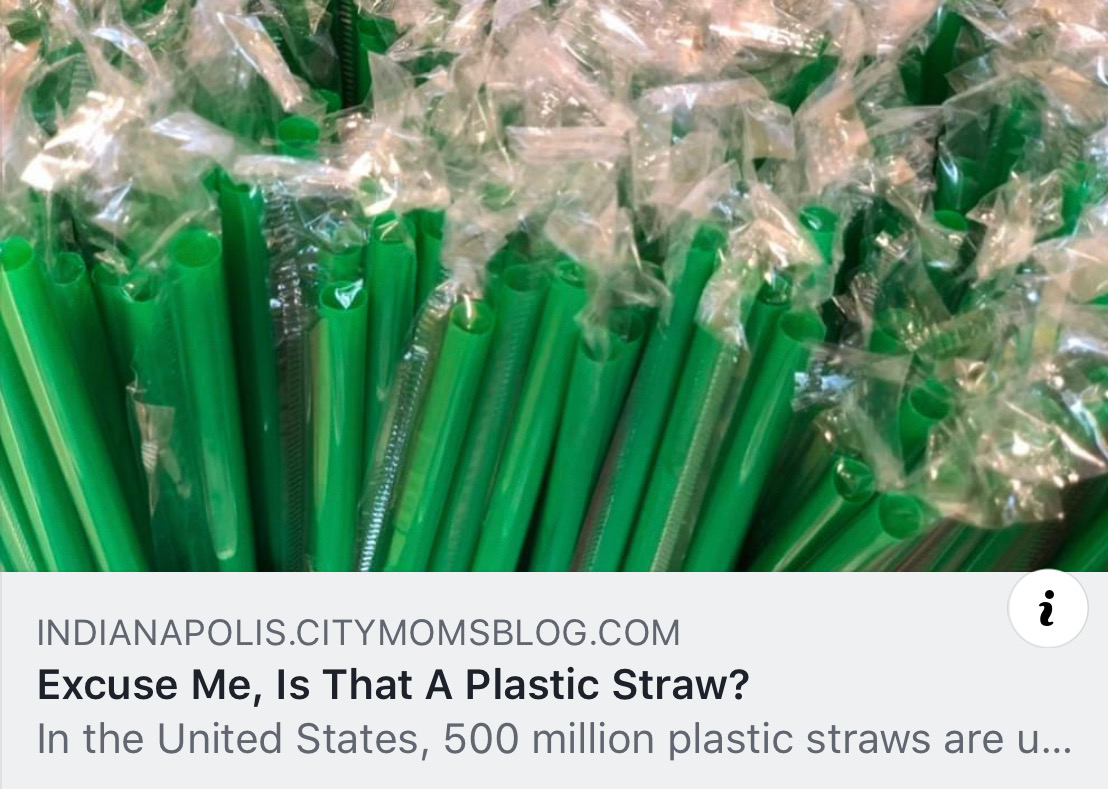


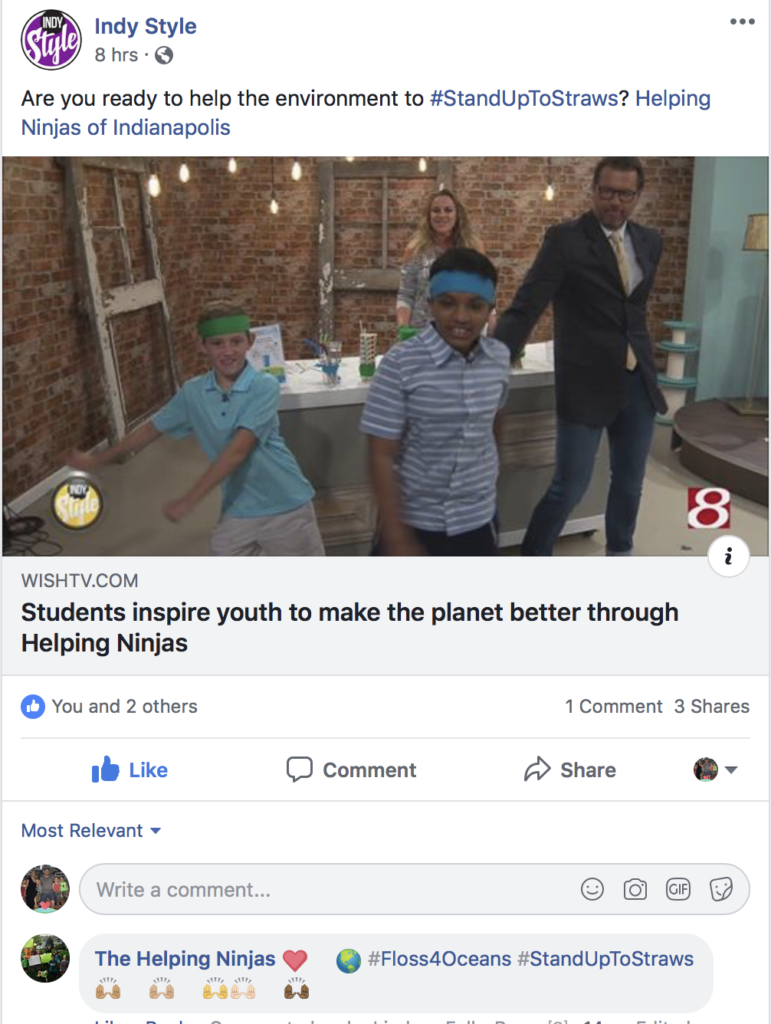
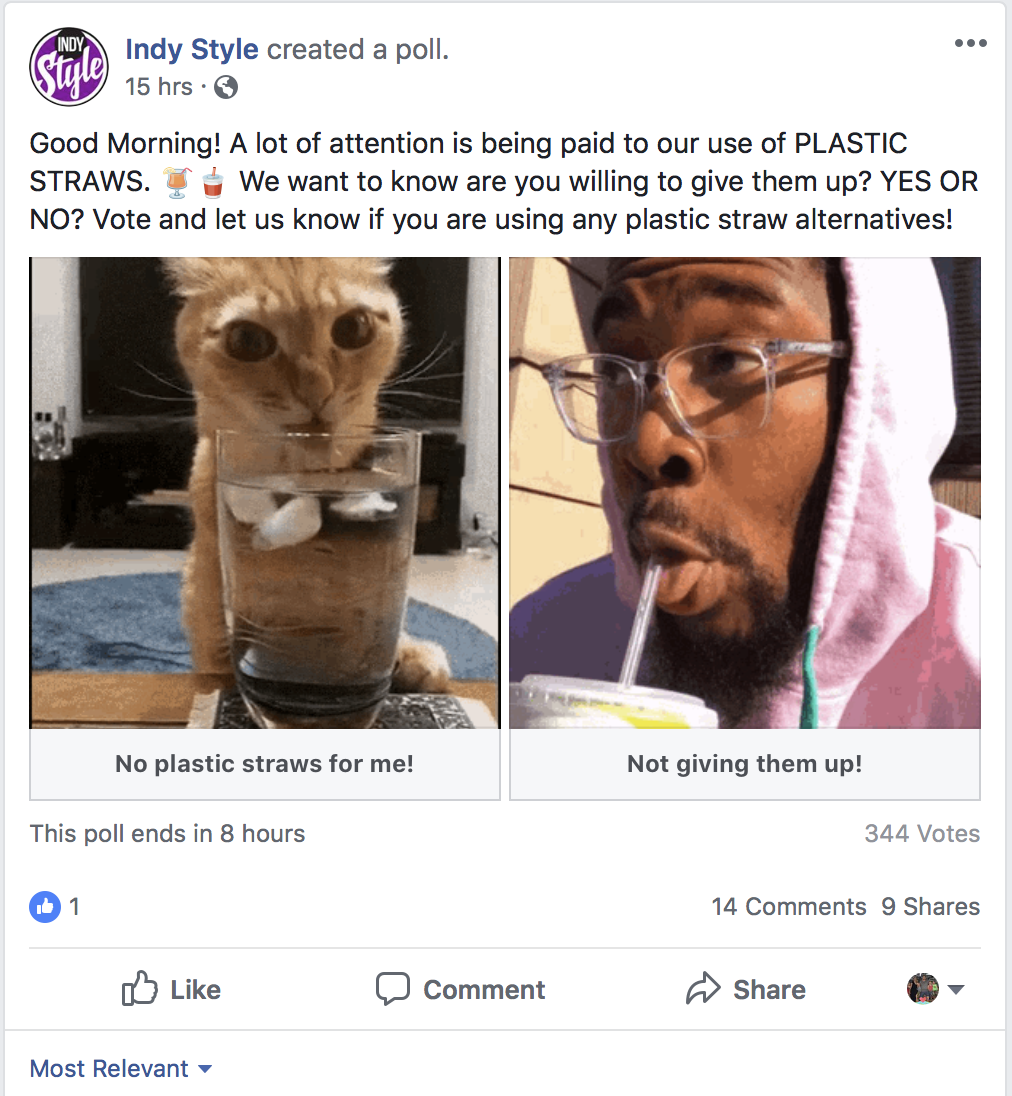
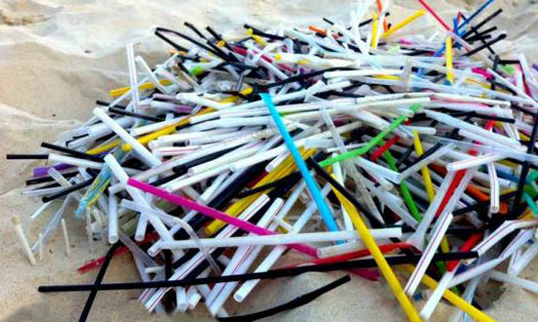
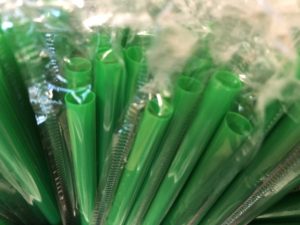
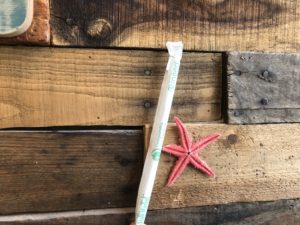 So what can we do about it? We can start by obviously, not using straws. But, how do we get others to not use straws? Join the Helping Ninjas and Stand Up To Straws! Helping Ninjas are starting a new campaign, to stand up to straws! You can join too simply by taking the pledge to not use straws & posting a picture of yourself sipping out of cup – with no straw, or using a reusable or plastic straw – or by sharing important information such as the info in this blog!
So what can we do about it? We can start by obviously, not using straws. But, how do we get others to not use straws? Join the Helping Ninjas and Stand Up To Straws! Helping Ninjas are starting a new campaign, to stand up to straws! You can join too simply by taking the pledge to not use straws & posting a picture of yourself sipping out of cup – with no straw, or using a reusable or plastic straw – or by sharing important information such as the info in this blog!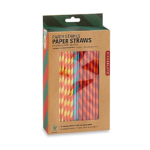 Can you live without a straw? You can just sip out of a cup normally. And, if you are in a vehicle, you just have to be extra careful not to spill and ask them not to fill the cup to the top!
Can you live without a straw? You can just sip out of a cup normally. And, if you are in a vehicle, you just have to be extra careful not to spill and ask them not to fill the cup to the top!  Or if you have to have a straw – don’t hurt the planet just because you can’t go without one! Be thoughtful to the Earth and everyone on it, and take the extra step to buy paper straws, like the photo to the left by Kickerland, and/or reusable/recyclable metal ones, like this photo of the kind that U-KONSERVE makes & sell.
Or if you have to have a straw – don’t hurt the planet just because you can’t go without one! Be thoughtful to the Earth and everyone on it, and take the extra step to buy paper straws, like the photo to the left by Kickerland, and/or reusable/recyclable metal ones, like this photo of the kind that U-KONSERVE makes & sell.

